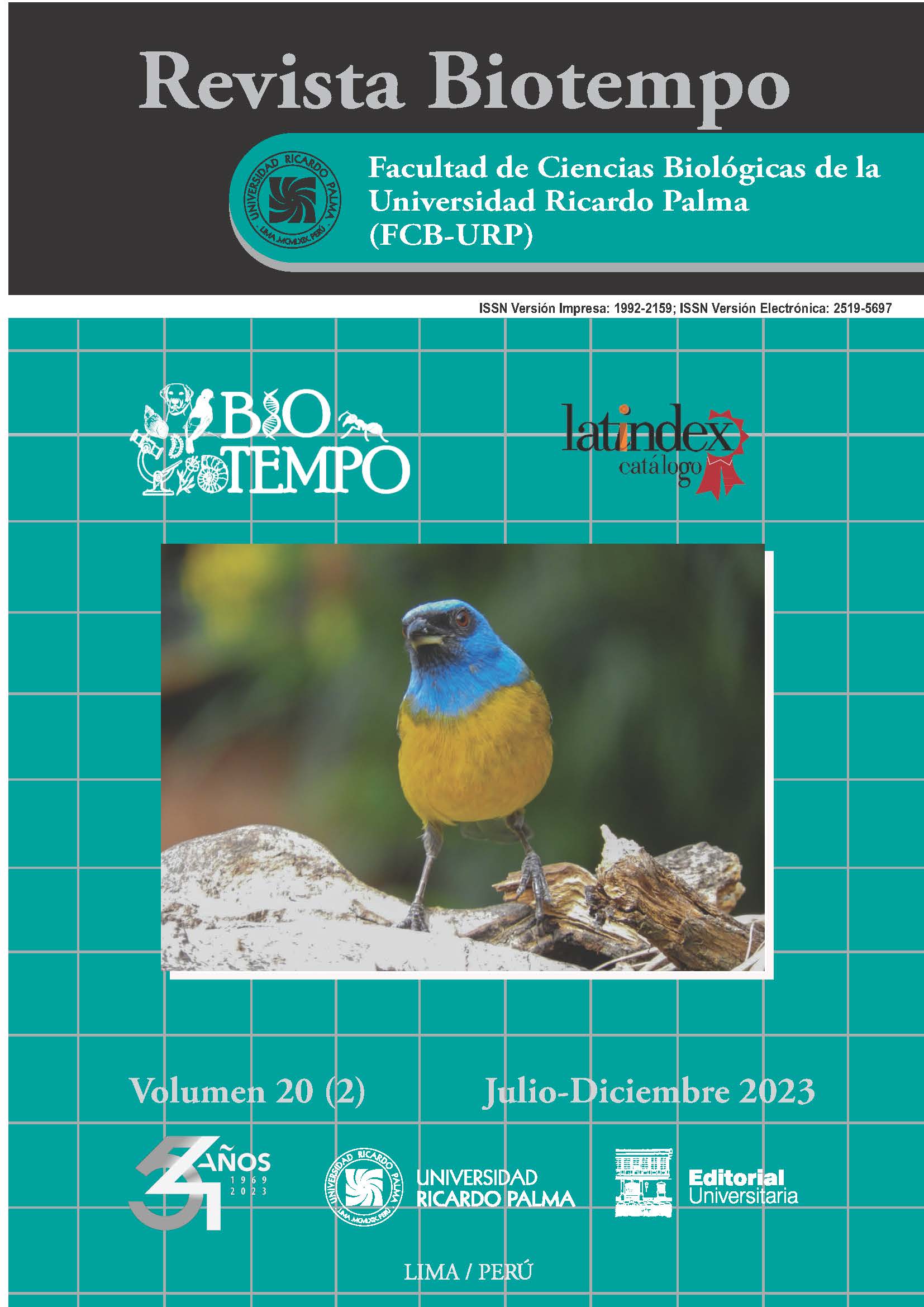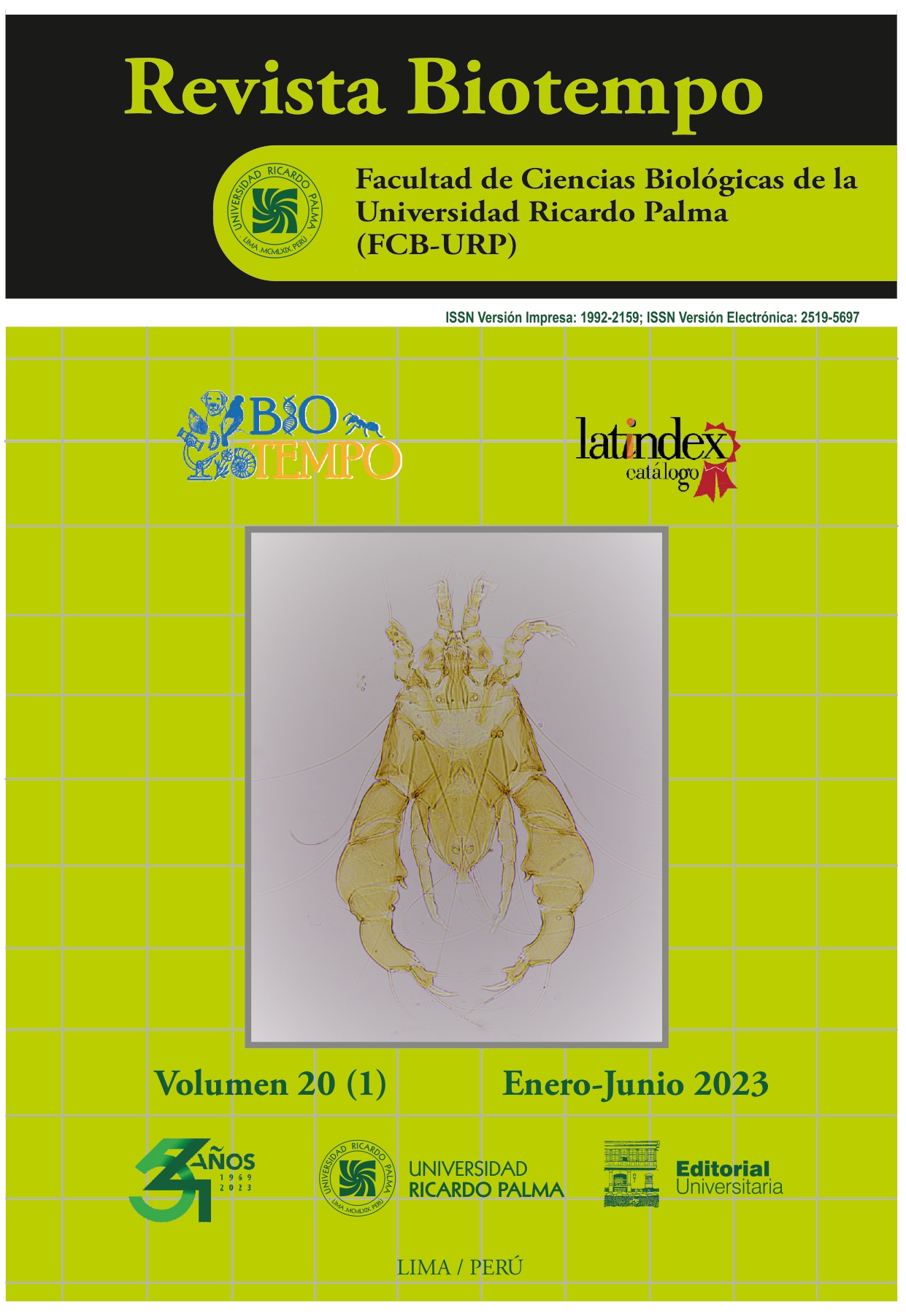Modelado y análisis de los contagios por Covid-19 en el Perú
DOI:
https://doi.org/10.31381/biotempo.v20i2.6191Palabras clave:
contagios, COVID-19, estimación, modelado logístico, Perú, validaciónResumen
Describir la pandemia de la COVID-19 en el Perú, realizar un modelamiento estadístico matemático, determinar el tiempo crítico, la velocidad con que se desarrolló la pandemia y validar de los datos estimados; han caracterizado esta investigación; cuyo objetivo ha sido modelar y analizar los contagios por COVID-19 en el Perú, y comparar las personas contagiadas y las personas estimadas contagiadas; valorar el tiempo crítico en la que se produce la velocidad máxima de personas estimadas contagiadas y validar estadísticamente el modelo. Se ha tomado en cuenta los datos de contagios por la COVID-19 hasta el veinticuatro de febrero del 2023; llegando a determinar que describen una dispersión logística sigmoidal; suceso que fue modelado matemáticamente mediante la expresión , que es una ecuación logística predictora. Con el modelo matemático predictivo se estimó el número de personas contagiadas y su comportamiento de la COVID-19 en el Perú. De igual forma se evaluó la velocidad de las personas contagiadas con la COVID-19 en el Perú. Se estimó el tiempo crítico ( ) para la cual la velocidad de personas contagiadas fue máxima, valores que son y la velocidad máxima , respectivamente y la fecha que hubo la máxima velocidad de contagios por la COVID-19, fue el 28 de febrero del 2022. El coeficiente de correlación de Pearson para el tiempo transcurrido ( ) y el número de personas contagiadas ( ) en el Perú, por la COVID-19, basado en 37 casos, fue de ; determinando que la relación entre el tiempo y el número de contagios, es real, que el modelo predictivo tiene alta estimación de los datos correlacionados, que existe una “correlacion muy fuerte” entre el tiempo transcurrido ( ) y el número de personas contagiadas ( ) y que el 63 % de la variancia en es explicada por . Se concluye que el modelo logístico se puede aplicar con rigurosidad a fenómenos pandémicos y epidemiológicos con alta resolución y con alto grado de estimación y, se ha determinado que el coeficiente de correlación tiene una “asociación negativa muy fuerte” entre el número de contagios por la COVID-19 y el tiempo transcurrido en días.










